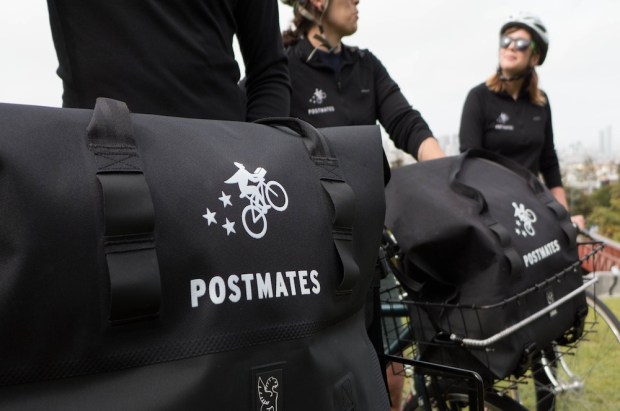Postmates Says It’s Generated $1.2B In Economic Activity

Postmates — in cooperation with Edelman Intelligence — set out to determine what effect the company has had, economically speaking, in the cities in which it operates. Using data from 2017 to the present day — and tapping information from the 300 U.S. markets where the food delivery service has a presence — the Postmates/Edelman data indicated that $1.2 billion has been generated through the Postmates platform, according to news from CNBC.
Postmates works by connecting 150,000 couriers to 25,000 merchant partners to enable the delivery of goods on demand. According to the survey, those couriers earned about $216.8 million last year, with an average hourly rate of $18.32.
But apart from measuring its own platform, the study also looked to see how businesses performed using Postmates versus the performance of those that did not. By the numbers, businesses who used Postmates reported growing 3.7 times faster after joining.
“There is a fundamental shift happening in our cities right now — it’s not just that customers and buyers can summon anything at the click of a button to their doorstep,” said Vikrum Aiyer, head of strategic communications and policy at Postmates. “But there is also a difference in how businesses are competing as a result of a shift in commerce.”
Postmates is a delivery platform writ large: The company delivers food, but it also delivers hardware, electronics, office supplies and a variety of other goods. The firm reportedly pushes to get all deliveries into consumers’ hands within one hour of ordering.
“The data we see in the top 30 MSAs [(metropolitan statistical areas)] in the U.S., and similarly in Canada, is where these services have grown the fastest,” said Foster Finley, global co-head of transportation and infrastructure practice at consulting firm AlixPartners.
The growth, he noted, was mostly focused in cities with high populations; once those numbers decreased, growth dropped off significantly.
“It’s triggered a fascinating phenomenon, but when you go to tier-two cities, in many cases, the same growth isn’t there. There’s a bifurcation between big metropolitan areas, where there is a higher concentration of digitally minded industries and the rest of the world.”
R.J. Hottovy, senior restaurant and retail analyst at Morningstar, said the appeal of delivery services like Postmates is mixed, particularly for food brands that seek out delivery — despite the fact that they are already pretty low margin.
“I think where delivery works is really a byproduct of the market itself, how densely populated it is and spending patterns of consumers,” Hottovy said. “There are pros and cons as a restaurant operator — you get greater incremental revenue from it, add new customers and get better access to consumer data. But it can be expensive — from 15 to 25 percent of a cut — to participate in these partnerships.”
The trend, both analysts predicted, is likely going to continue, as consumers are showing more interest in delivery of late.
